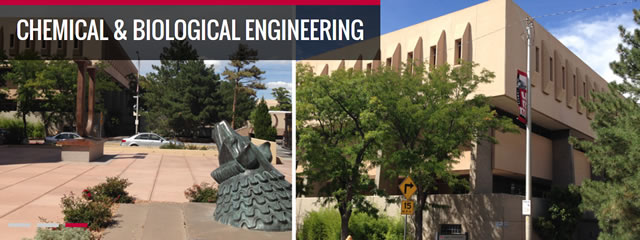
Chemical and Biological Engineering ETDs
Publication Date
Fall 11-14-2018
Abstract
With the increasing demand on renewable energy, the fuel cell has attracted more and more interests because of its large power density and controllable size. However, the insufficiency of element abundance and unstable expensive price of conventional platinum-based electrocatalysts used in anode and cathode makes it essential to find their substitutes. As one of the most promising candidates to be used in cathode for oxygen reduction reaction (ORR), iron-nitrogen-carbon (Fe-N-C) catalysts have been widely investigated and get commercialized recently, but still lacks comprehensive understanding on the kinetic mechanism.
This dissertation has been divided into three parts with a discussion on rate-determining step (RDS) and selective active sites inhibition of Fe-N-C ORR electrocatalyst. This first part utilizes kinetic isotope effect (KIE) to figure out that RDS is the first charge transfer and has different proton dependency in the kinetic-controlled region and mass transport-controlled region. The atomically dispersed Fe-N-C catalyst can achieve KIE around 1 in the kinetic-controlled region, implying that Fe-N-C could compete with Pt-based catalysts by optimizing synthesis and structures, while KIE keeps around 2 but slightly decreases with potential dropping in the mass transport-controlled region, indicating that nitrogen active sites have strong proton dependence on kinetics.
In the second and third parts, nitrogen-contained tris(hydroxymethyl)aminomethane (Tris) and nitrogen-free 1-hydroxyethane 1,1-diphosphonic acid (HEDP) have been used as molecular probes to inhibit Fe-N-C catalysts. It is found that Tris has irreversible inhibition on iron active sites but reversible inhibition on nitrogen active sites, in addition that Tris could protonate pyridinic nitrogen active sites to enhance the 2-electron pathway, resulting in more reduction of oxygen to peroxide. It is also found that HEDP has no performance inhibition of iron active sites but obvious inhibition on pyrrolic/hydrogenated nitrogen active sites, leading to higher selectivity towards 4-electron pathway of oxygen reduction to water in ORR. These selective inhibitors reveal more research possibility on the mechanism study of Fe-N-C catalysts.
Keywords
fuel cell, oxygen reduction reaction, platinum-group-metal free, kinetic isotope effect, catalyst inhibition, catalyst active sites probing
Document Type
Dissertation
Language
English
Degree Name
Chemical Engineering
Level of Degree
Doctoral
Department Name
Chemical and Biological Engineering
First Committee Member (Chair)
Plamen Atanassov
Second Committee Member
Fernando Garzon
Third Committee Member
Iryna Zenyuk
Fourth Committee Member
Ivana Matanovic
Fifth Committee Member
Kateryna Artyushkova
Recommended Citation
Chen, Yechuan. "Rate-Determining Step and Active Sites Probing for Platinum-Group-Metal Free Cathode Catalyst in Fuel Cell." (2018). https://digitalrepository.unm.edu/cbe_etds/74


